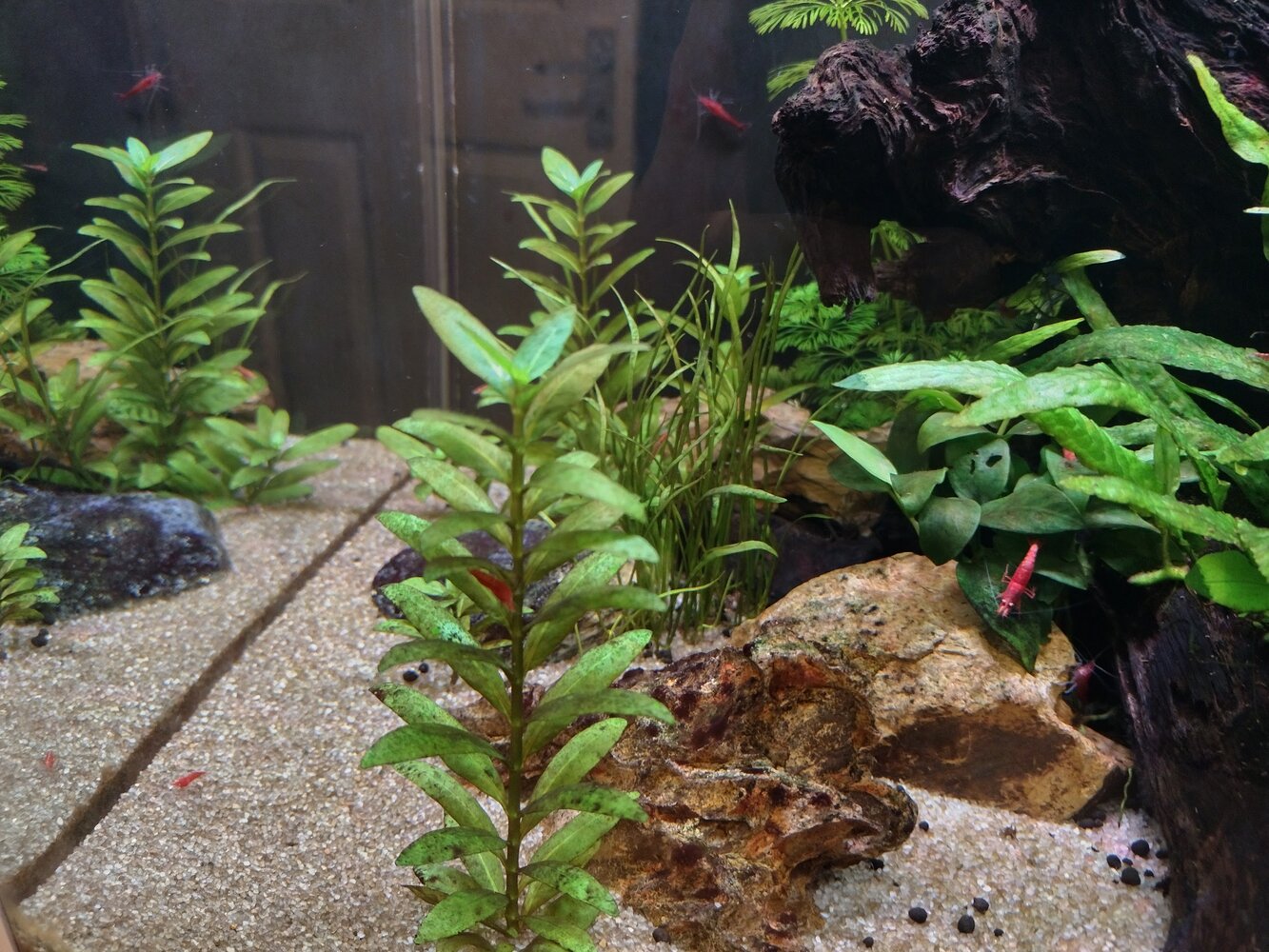Hello, this is my first tank (55L low tech), and it's been setup for around 5 months now. To start with I was getting really good growth, but over the last 2-3 months I've noticed that only the newer growth is green on most plants. The older leaves are brown and unhealthy, and I'm not sure why.
While the browning is most obvious in the limnophilia, it's also noticeable on the rotala and the foreground plants.
I've also noticed that the stem plants are growing much slower than before. When I first setup the tank, the limnophilia would grow rapidly. But I trimmed some of it back a couple of weeks ago and there's barely been any regrowth since. Even the salvinia seems to be spreading much less rapidly - I haven't had to remove any for ages. When I first added it to the tank it seemed to multiply like crazy.
Things I've tried:
I'd really appreciate any help. Thanks in advance!
1. Size of tank - 55 litres.
2. Age of the system approximately - 5 months
3. Tap water parameters - According to South East Water, I live in a hard water area - 2.22 mmol/l. When I last tested the tank, GH 196 and KH 125.
4. Filtration - I'm using the Aqua Nano 40 which has a filter compartment at the back containing a large coarse sponge, a big bag of ceramic media, and a smaller sponge. The pump flow can be adjusted, but I've got it set to the lowest otherwise the flow seems way too strong for my guppies. I also recently added a submersed spray bar angled upwards for a bit more surface agitation (around 10 days ago), before that it came out a single tube.
5. Lighting and duration - 8 hours photoperiod using the LED light that came with the tank.
6. Substrate - Fluval Stratum topped with decorative sand.
7. Co2 dosing or Non-dosing - No Co2
8. Drop Checker - N/A
9. Fertilizers used + Ratios - Originally I was using API Leaf Zone, but I wondered if this was causing a nutrient deficiency. Around 4 weeks ago I switched to a combination of NT Labs Plant Boost & Liquid CO2 Boost with two sprays of each per day. I haven't noticed any difference in plant growth or reduction in the brown leaves.
10. Water change regime and composition - I do a 20% water change each weekend. Most weeks I'll also do an extra 20% water change during the week, but not always.
11. Plant list + Invitro/Emersed - Salvinia, Rotala rotundifolia, Limnophila Sessiliflora, Anubias Nano, Java Fern + a couple of others that I can't remember the name of.
12. Inhabitants - 4 male guppies + around 20 red cherry shrimp
While the browning is most obvious in the limnophilia, it's also noticeable on the rotala and the foreground plants.
I've also noticed that the stem plants are growing much slower than before. When I first setup the tank, the limnophilia would grow rapidly. But I trimmed some of it back a couple of weeks ago and there's barely been any regrowth since. Even the salvinia seems to be spreading much less rapidly - I haven't had to remove any for ages. When I first added it to the tank it seemed to multiply like crazy.
Things I've tried:
- At first I thought it might be algae, so I reduced the lighting to around 6 hours per day and stopped dosing. This didn't help, so I switched back to using API Leaf Zone once a week.
- Then I thought it might not be enough light. There's no dimmer on my light, so I tried moving it a bit closer to the tank. No improvement.
- Then I thought it might be a nutrient deficiency, so I started using NT Labs Plant Boost + Liquid CO2 Boost instead around 4 weeks ago, but again no improvement.
I'd really appreciate any help. Thanks in advance!
1. Size of tank - 55 litres.
2. Age of the system approximately - 5 months
3. Tap water parameters - According to South East Water, I live in a hard water area - 2.22 mmol/l. When I last tested the tank, GH 196 and KH 125.
4. Filtration - I'm using the Aqua Nano 40 which has a filter compartment at the back containing a large coarse sponge, a big bag of ceramic media, and a smaller sponge. The pump flow can be adjusted, but I've got it set to the lowest otherwise the flow seems way too strong for my guppies. I also recently added a submersed spray bar angled upwards for a bit more surface agitation (around 10 days ago), before that it came out a single tube.
5. Lighting and duration - 8 hours photoperiod using the LED light that came with the tank.
6. Substrate - Fluval Stratum topped with decorative sand.
7. Co2 dosing or Non-dosing - No Co2
8. Drop Checker - N/A
9. Fertilizers used + Ratios - Originally I was using API Leaf Zone, but I wondered if this was causing a nutrient deficiency. Around 4 weeks ago I switched to a combination of NT Labs Plant Boost & Liquid CO2 Boost with two sprays of each per day. I haven't noticed any difference in plant growth or reduction in the brown leaves.
10. Water change regime and composition - I do a 20% water change each weekend. Most weeks I'll also do an extra 20% water change during the week, but not always.
11. Plant list + Invitro/Emersed - Salvinia, Rotala rotundifolia, Limnophila Sessiliflora, Anubias Nano, Java Fern + a couple of others that I can't remember the name of.
12. Inhabitants - 4 male guppies + around 20 red cherry shrimp









